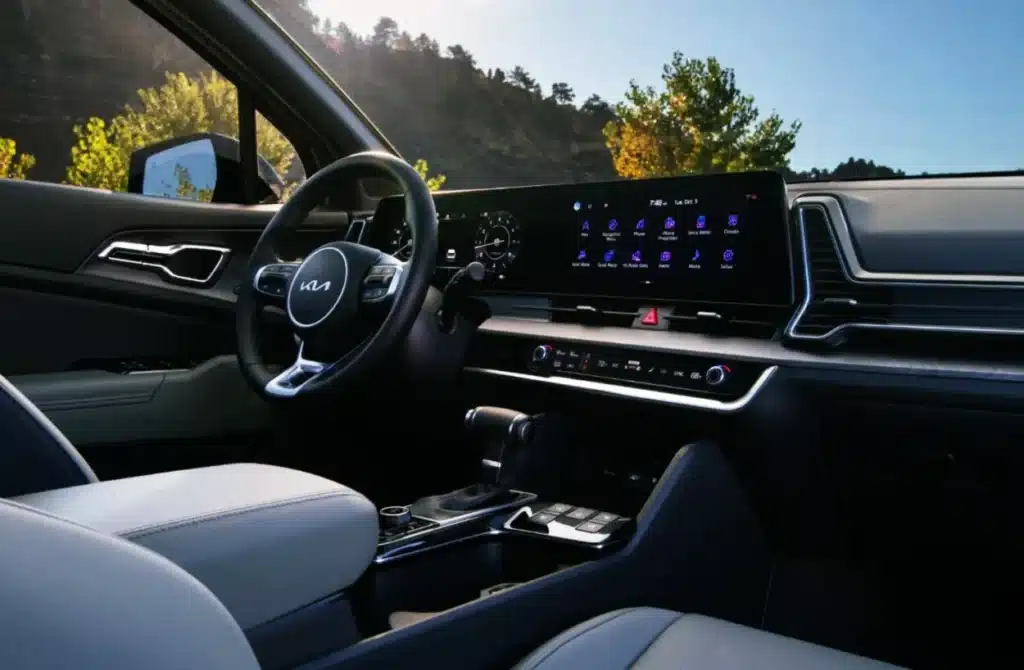Why the KIA Sportage Tops the Charts?
The Kia Sportage isn’t just another SUV in the UK market; it’s the one that’s been quietly stealing the show. In July 2025, it outsold every other SUV in the country, shifting 4,482 units. That’s not a fluke. It’s the result of a formula Kia has been perfecting: bold design, family-friendly practicality, a choice of efficient engines, and a warranty that embarrasses most rivals. If you’re cross-shopping the Nissan Qashqai, Hyundai Tucson, VW Tiguan, or Ford Kuga, the KIA Sportage deserves a serious look — and here’s why.
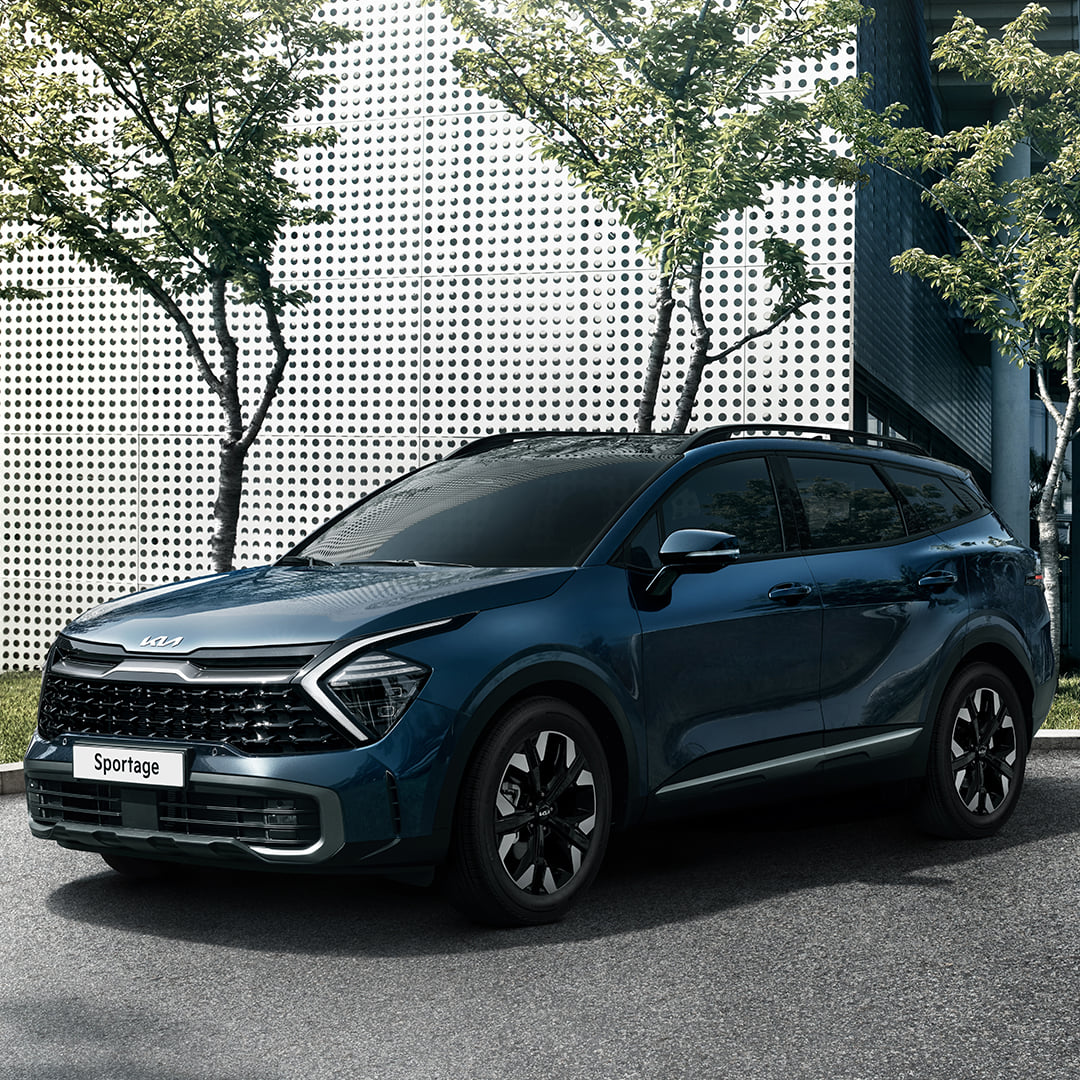
Pricing & Value – Where It Sits in the Market
Official Kia UK OTR Prices (Aug 2025):
- Petrol (1.6 T‑GDi): from £30,885
- Hybrid (HEV): from £34,425
- GT‑Line S Hybrid AWD: £43,725
- PHEV: arriving late 2025, expected £40,000+
Value verdict: The entry petrol undercuts a VW Tiguan by a few grand, while the hybrid is priced neck‑and‑neck with a Nissan Qashqai e-Power. You’re paying a little more than for a Ford Kuga for the hybrid, but you get a longer warranty and more tech as standard.
Design – Bold, But Not for Everyone
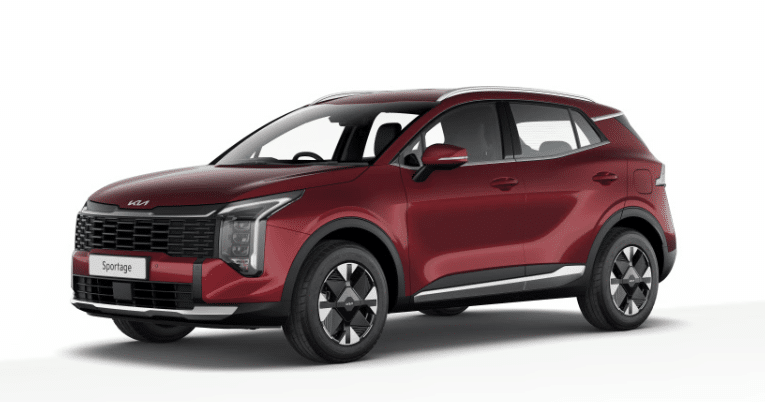
The KIA Sportage’s “tiger nose” grille and boomerang LED DRLs make it stand out in a car park full of safe, samey SUVs. Some love it, some don’t — but at least it’s not anonymous like a Toyota RAV4. The GT‑Line trims add sportier bumpers and bigger alloys, but even the base Pure trim looks sharp.
Dimensions & Practicality
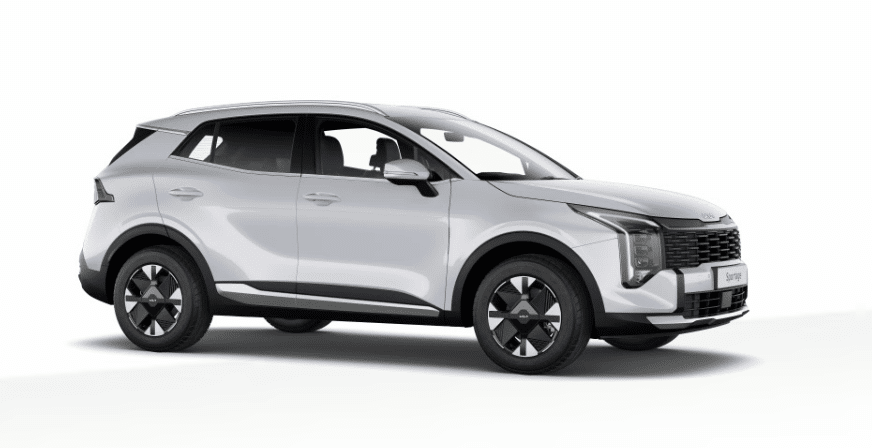
- Length: 4,540 mm – slightly shorter than a Hyundai Tucson, easier to park.
- Boot Space:
- Petrol: 587 litres – one of the biggest in class (beats Qashqai’s 504L).
- Hybrid: 562 litres – still generous despite battery.
- Rear Space: Adults over 6ft will be fine in the back; a flat floor helps middle passenger comfort.
👍 Good: Huge boot, wide opening, low load lip.
👎 Watch out: PHEV loses ~40L boot space to battery.
Engines & Performance – Which One’s Right for You?
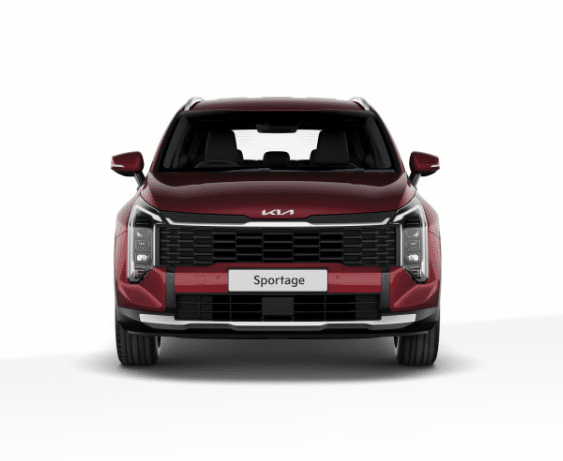
1.6 T‑GDi Petrol
- 148 bhp, 0–62 mph in 9.4s, ~40 mpg WLTP.
- Best for: Lower mileage drivers who don’t need hybrid efficiency.
- Compared to rivals: Punchier than a base Qashqai petrol, but less frugal.
1.6 T‑GDi Hybrid (HEV)
- 239 bhp combined, 0–62 mph in 8.1s, ~49 mpg WLTP.
- Best for: Mixed driving, urban + motorway.
- Compared to rivals: Quicker than Qashqai e‑Power, similar mpg.
1.6 T‑GDi Plug-in Hybrid (PHEV) (coming soon)
- ~261 bhp, ~45 miles EV range.
- Best for: Company car drivers (low BIK) or those with home charging.
- Compared to rivals: Matches Tucson PHEV range, beats Ford Kuga PHEV.
Ride & Handling – Comfort First
The KIA Sportage isn’t pretending to be a hot hatch. It’s tuned for comfort, with light steering and a composed ride. On 17–18″ wheels, it soaks up bumps better than a Tiguan R‑Line on 20s. The hybrid’s extra weight is well‑managed, though you’ll feel it in tighter corners.
Interior & Tech – Where Kia Pulls Ahead
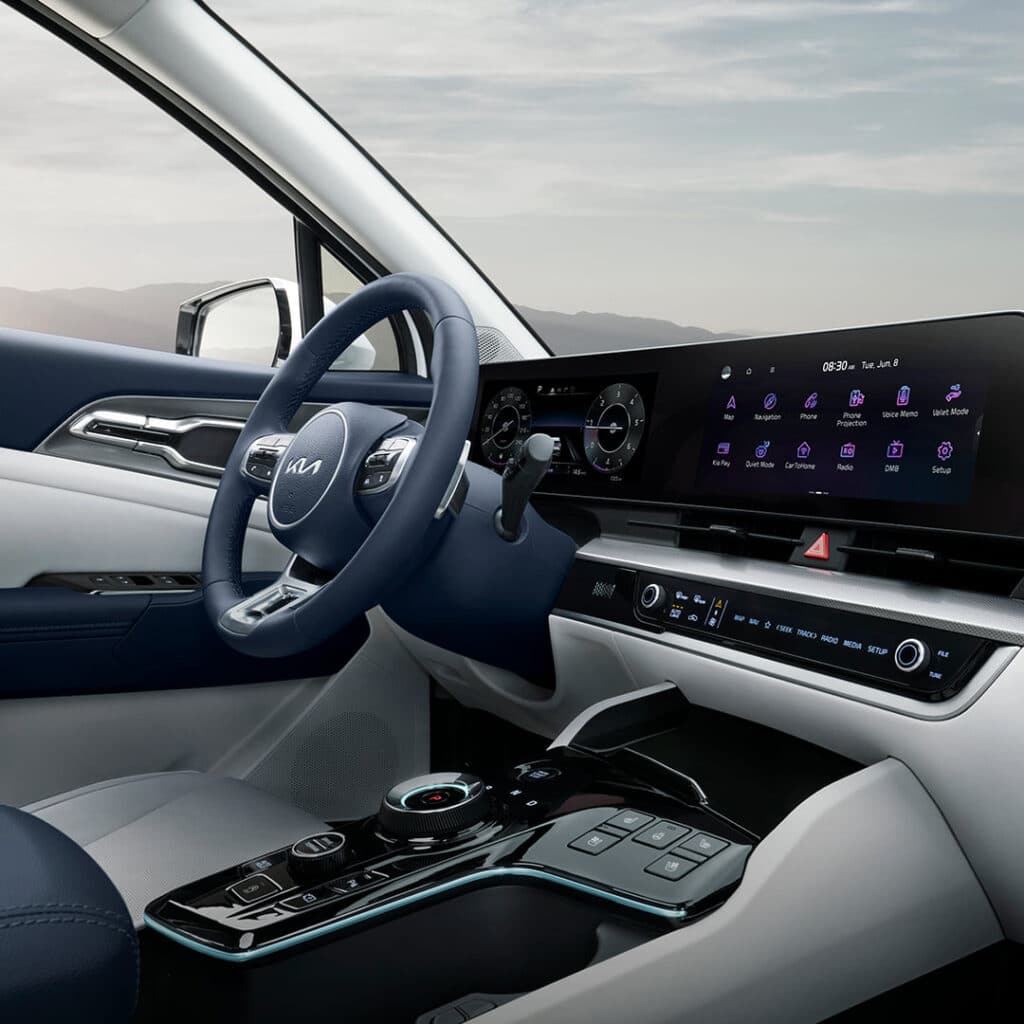
- Dual 12.3″ curved displays – crisp graphics, intuitive menus.
- Wireless CarPlay/Android Auto – but only on a smaller screen; wired on a big screen.
- OTA updates – keep maps and software fresh.
- Premium touches – soft‑touch dash, solid switchgear.
- GT‑Line S adds Harman Kardon audio, panoramic roof, and ventilated seats.
Compared to rivals:
- Feels more modern than a Qashqai inside.
- Infotainment is slicker than VW’s touch-heavy setup.
- Tucson shares the same tech but with a different UI.
Safety – 5 Stars Where It Counts
Euro NCAP: 5-star rating (2022 test). Standard kit includes:
- Forward Collision‑Avoidance Assist (with junction turn)
- Lane Keep & Lane Follow Assist
- Blind Spot Collision Avoidance
- Rear Cross Traffic Alert
- ISOFIX on outer rear seats
👍 Good: Safety kit standard even on base trim.
👎 Watch out: Adaptive cruise only on auto models.
Running Costs
- Warranty: 7 years / 100,000 miles – unmatched in class.
- Servicing: Annual or 10,000 miles; fixed‑price plans available.
- Insurance: Group 17–25 depending on trim.
- Depreciation: Strong resale values thanks to warranty and demand.
Pros & Cons
| Pros 👍 | Cons 👎 |
| Stand‑out design | Styling not to all tastes |
| Huge boot & roomy cabin | PHEV boot is smaller |
| Long warranty | Hybrid engine noise under hard acceleration |
| Efficient hybrid option | |
| High standard spec |
Should You Buy the KIA Sportage?
If you want a family SUV that’s practical, well-equipped, and backed by a warranty that outlasts most PCP deals, the KIA Sportage is a top contender. The hybrid is the sweet spot for most buyers, offering strong performance and efficiency without the charging faff of a PHEV.
If you value a softer ride, the Hyundai Tucson edges it. If badge prestige matters, the VW Tiguan or Audi Q3 might tempt you. But for all‑round value and peace of mind, the KIA Sportage is hard to beat.
Gallery:
FAQ’s:
-
When will the 2026 Kia Sportage facelift launch in the UK?
The facelift is expected in Q1 2026 for the UK and EU, mid‑2026 for Australia, and late‑2026 for India.
-
What engines are available in the 2025 Kia Sportage?
Depending on the market: petrol, diesel, hybrid, and plug‑in hybrid options. Power outputs and availability vary by region.
-
What are the main changes in the 2026 Kia Sportage facelift?
It will feature a revised front bumper, slimmer DRLs, new grille mesh, updated alloy designs, a refreshed infotainment UI, wireless Apple CarPlay/Android Auto on larger screens, and small power gains for hybrid and PHEV models.
-
Is the Kia Sportage good for families?
Yes, it has generous rear legroom, multiple USB‑C ports, rear air vents, and a flat load floor, making it practical for family use.
-
What safety features does the Kia Sportage offer?
Standard or available features include lane‑keep assist, adaptive cruise control, blind‑spot monitoring, forward collision avoidance, and a 360° camera on higher trims.
-
What is the mileage of the Kia Sportage?
Mileage varies by engine and market. In the UK, the 1.6‑litre diesel can return up to 53–57 mpg (WLTP), while the 1.6‑litre petrol hybrid averages around 48–50 mpg (WLTP). The plug‑in hybrid (PHEV) offers up to 43 miles of electric‑only range before switching to petrol, with a combined figure of over 200 mpg in official tests. Real‑world results will depend on driving style, load, and terrain

